|
Displaying items by tag: Europe
On February 6 in London, a painting by the Italian artist Amedeo Modigliani (1884-1920) will lead Christie’s Impressionist and Modern Art Sale. Painted in 1919, Jeanne Hebuterne (au chapeau) is a portrait of Modigliani’s common-law wife seated in a wooden chair wearing a black hat and dress, illustrating the elongated form he is known for.
While Modigliani is one of Europe’s highest-selling modern artists, the market for Impressionist and modern art has slowed lately due to a lack of exceptional works in circulation. However, the upcoming sale at Christie’s is expected to bring as much as $237 million with the Modigliani portrait selling for as much as $35.5 million.
Jeanne Hebuterne appeared in a posthumous Modigliani retrospective in Venice in 1922. The portrait was bought from Sotheby’s, London for $26.4 million by a New York collector who is now putting it up for sale.
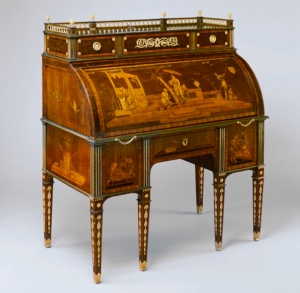
On view through January 27, 2013 at the Metropolitan Museum of Art in New York, Extravagant Inventions: The Princely Furniture of the Roentgen’s is the first comprehensive exhibition to focus on the Roentgen family’s cabinetmaking firm, which operated from 1742 into the early 1800s. Extravagant Inventions presents around sixty pieces of furniture, many of which have never been seen outside of Europe.
Abraham Roentgen (1711-1793) and his son David (1743-1807) were pioneering figures in 18th century Continental furnituremaking. Based in Germany, the Roentgen firm’s style is characterized by opulence, inventiveness (they often incorporated hidden compartments and secret drawers into their works), and ornate, finely carved shapes. The Roentgens served clients around Europe including France’s Louis XVI and Marie Antoinette and Russia’s Catherine the Great.
Extravagant Inventions brings together works from various international collections as well as six works from the Met’s own holdings. Highlights include a writing desk (circa 1758-1762) designed by Abraham Roentgen and considered one of the greatest creations from his workshop, a mechanical secretary cabinet (1779) made for King Friedrich Wilhelm II of Prussia, and a pair of marquetry portraits (1775-1780) depicting a man and a woman, which exemplifies the marquetry technique the Roentgens were renowned for.
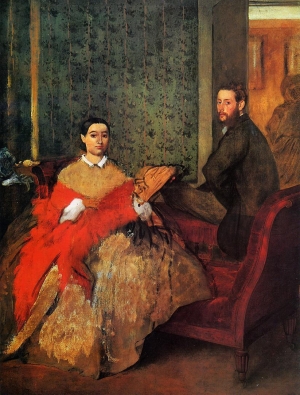
Patrons who are familiar with the permanent collection at Boston’s Museum of Fine Arts might become befuddled upon their next visit to the institution. Some of the museum’s finest works including Pierre-Auguste Renoir’s Dance at Bougival, the pivotal Claude Monet painting, La Japonaise: Camille Monet in a Japanese Costume, five works by Paul Cézanne, five more by Edouard Manet, and two of the masterpieces by Vincent Van Gogh are nowhere to be found.
While some of the works have been lent to museums in the United States, Japan, and Europe to enhance exhibitions, others have been rented to for-profit organizations. Loans between institutions are common practice, but compounded with the large number of works currently out on rent by the MFA, the museum’s own collection appears to be lacking. Currently, 26 of the MFA’s paintings are involved in exhibitions in Italy, which the institution received a hefty yet undisclosed fee for. Some of the works now on view in Italy are two paintings by John Singleton Copley and two Rembrandt portraits as well as single works by Eugène Delacroix, Paolo Veronese, Winslow Homer, John Singer Sargent, Paul Gauguin, Alberto Giacometti, and Pablo Picasso.
While the MFA is excited to be raising revenues, the act of charging fees for lending works has been a source of controversy. One of the main duties of public institutions, including art museums, is to share their collections with the public. Many objectors find the practice of lending works for profit to be in direct opposition to this goal.
Other major holdings that are not presently at the MFA are Diego Velázquez’s Luis de Gongora, two works by El Greco, two more by Gustave Courbet, the museum’s only painting by Edvard Munch, and arguably its greatest work by Edgar Degas, Edmondo and Therese Morbilli. While MFA officials argue that they are bolstering the museum’s international reputation, critics feel the institution is suffering for it.
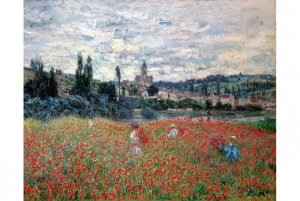
Juan Carlos Emden, the grandson of a wealthy Jewish businessman, is demanding that the Swiss Buehrle collection return a Claude Monet painting that the family was forced to sell as they fled Europe during World War II. The masterpiece was sold in haste for a little less than $32,000. The painting today is valued at around $27 million.
Emden is the Chilean grandson of Max Emden who bought Monet’s Poppy Field Near Vetheuil in the 1920s. Max was forced to flee Nazi Germany in 1933 for Ticino, Switzerland, where he built the Villa Emden to house his art collection, including Poppy Field Near Vetheuil, one of Monet’s most famous paintings. After his death in 1940, Emden’s son, Hans Eric Emden, was forced to sell his father’s art collection to finance his fleeing to South America from Europe.
Juan Carlos Emden is rumored to have been fighting for years to regain ownership of his grandfather’s painting and is planning to travel to Zurich to discuss how to recover the work with his lawyers. Poppy Field Near Vetheuil was stolen during a heist at the Buehrle museum in 2008, but it was found several days later.
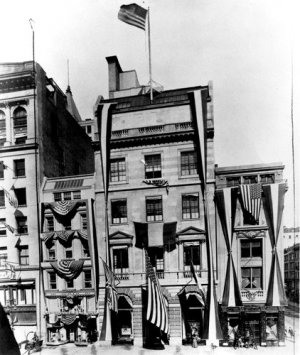
165 years ago, the Knoedler Gallery opened its doors in New York and went on to help create some of the country’s most celebrated collections including those of Paul Mellon, Henry Clay Frick, and Robert Sterling Clark. Throughout the years, top-notch works by artists such as van Gogh, Manet, Winslow Homer, John Singer Sargent, Louise Bourgeois, and Willem de Kooning passed through the gallery. When the Soviet government sold hundreds of paintings from the State Hermitage Museum in Leningrad in the 1930s, they chose to work with Knoedler to sell paintings by masters like Rembrandt, Raphael, and Velazquez.
Knoedler’s exemplary past is often forgotten as the gallery’s present has been mired in lawsuits and accusations that the company’s former president, Ann Freedman, was in the business of selling fakes. Last year, Knoedler Gallery closed its doors for good.
This week, Los Angeles’ Getty Research Institute announced that it had bought the Knoedler Gallery archive. Spanning from around 1850 to 1971, the archive includes stock books, sales books, a photo archive and files of correspondence, including letters from artists and collectors, some with illustrations. The Getty was interested in Knoedler’s archive because it offers an expansive glimpse into the history of collecting and the art market in the United States and Europe from the mid-19th century to modern times.
The archive was purchased from Knoedler’s owner, Michael Hammer, for an undisclosed amount. Meticulously preserved, the archive will be available to scholars and digitized for online research after the Getty catalogues and conserves it all.
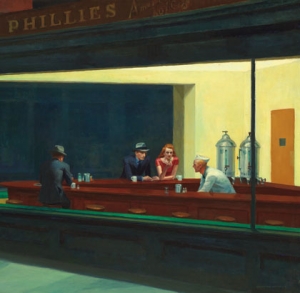
Best known for his paintings of stark diner scenes, snapshots of city life, and quiet portraits of the American landscape, there is much more to Edward Hopper’s (1882–1967) oeuvre than one might think. Referred to as a romantic, a realist, a symbolist, and even a formalist, the exhibition, Paintings by Edward Hopper (1882–1967) currently on view at the Grand Palais, Galeries Nationales in Paris aims to explore each facet of Hopper’s artistic identity.
Divided chronologically into two main parts, the first section of the exhibition covers Hopper’s early work from 1900 to 1924. During this time Hopper studied at the New York School of Art under Robert Henri, the founder of the Ashcan School of realism. Hopper also spent nearly a year in Paris in 1906, followed by shorter stays in 1909 and 1910.
The first part of the exhibition sets out to compare Hopper’s early work to that of his contemporaries as well as to the art he saw while in Paris. While in Europe, Hopper was influenced by such things as Degas’ original angles to Vermeer’s use of light. He was also moved by the soft, harmonious nature of Impressionism, which is reflected in his work from the time. This work is in sharp contrast to the almost gritty realism Hopper favored back in the United States.
1924 marked a turning point in Hopper’s career. After successful exhibitions of his watercolors of neo-Victorian houses in Gloucester, Massachusetts at the Brooklyn Museum and the Franck Rehn’s Gallery (New York), Hopper enjoyed commercial success and was able to fully devote his life to his art. Hopper’s watercolors mark the second section of the Grand Palais exhibition and feature the iconic paintings most people associate with the artist.
Curated by Didier Ottinger, assistant director of the MNAM – Center Pompidou, the exhibition of Hopper’s work will be on view through January 28, 2013.
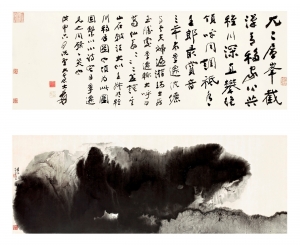
Sotheby’s hosted a number of sales in Hong Kong this past week. On October 7th, the Modern and Contemporary Southeast Asian paintings sale achieved $15.5 million, soaring past the pre-sale estimate of $5.8 million. The sale achieved the highest auction total for this category and the painting Fortune and Longevity by Lee Man Fong, an Indonesian modern master, set a record for any Southeast Asian painting when it sold for $4.4 million. The final price for the painting was almost three times the pre-sale estimate.
The Contemporary Asian Art sale totaled $15.1 million and Tiananmen No. 1 by Chinese symbolist and surrealist painter, Zhang Xiaogang, was the top lot at $2.69 million. Liu Wei’s Revolutionary Family Series – Invitation to Dinner was the second highest sale at $2.24 million, a world record price at auction for the Beijing-based artist who works in various mediums including video, installation, drawings, sculpture, and painting.
The 20th Century Chinese Art sale brought in $24.6 million and sold 90% by lot. Works from Europe, the United States, and around Asian sold well and many were above their pre-sale estimates. The top lot was Potted Chrysanthemums by the Chinese modern art pioneer, Sanyu, which sold for $3.99 million.
The following day, the Fine Chinese Paintings sale totaled $53.2 million, the highest of the four art auctions. Offering many works from private collections, the total sale was more than double the pre-sale estimate and sold 97.2% by lot. The two top lots at the auction, Zhang Daqian’s Swiss Peaks; Calligraphy in Xingshu and Fu Baoshi’s Lady at the Pavillion, both sold for $2,974,278.
Last year China beat out the United States as the world’s largest art and antiques market and the autumn sales reflect that power swap. There was a bit of controversy when a 60-year-old Taiwanese Buddhist sister demanded that a $1.65 million sale be halted at the Fine Chinese Paintings auction. Sotheby’s canceled the sale of a painting by Zhang Daqian after Lu Chieh-chien requested a court hearing to prevent bidding on Riding in the Autumn Countryside (1950) which she claims was the property of her family and had been consigned without consent.
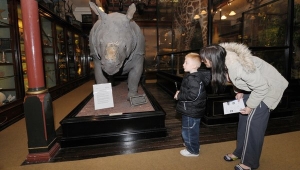
The Ipswich Museum contains many alluring and potentially theft-worthy items, including a spectacular 2,000-year-old gold-leaf Egyptian death mask on loan from the British Museum and a rare Hawaiian cape featuring feathers from the extinct o’o bird. But when two thieves forced their way in after midnight on July 28, they were seeking something else entirely.
Never mind that their target, a large rhinoceros horn, was still attached to its owner, which had been standing blamelessly in the museum since 1907.
“They just snapped it off,” said Bryony Rudkin, the Ipswich Borough Council member in charge of culture. Grabbing a pair of additional horns (and the rhino skull they belonged to) from a shelf nearby, the thieves disappeared as quickly as they had come. “It was like ‘The Pink Panther,’ ” Ms. Rudkin said. “In and out.”
It might have seemed like a bizarre, anomalous incident, the act of someone with a perverse rhino fetish. But similar thefts, as many as 30 so far this year, have been reported in museums, galleries, antiques dealerships, auction houses and homes across Europe as criminals try to feed a growing demand in China and other Asian countries, where medicine made from ground rhino horns is believed to act as an aphrodisiac and to cure cancer and other diseases.
“I was quite surprised, I must admit,” said Ian Lawson, a detective in the art and antiques unit at the Metropolitan Police Service in London, describing his first realization that rhino-horn theft had become a serious law-enforcement issue. “It’s taken a bit of time for everyone to wake up to the fact that this is a cross-Europe offense, and that they will attack anywhere that has a rhino horn.”
Mr. Lawson said that galleries and museums should be alert to what he called “hostile reconnaissance” by would-be thieves. They were also urged to keep images of their rhinos off their Web sites, to lock the horns away, or, as the Natural History Museum in London has done, to replace them with fake horns.
While horns have sold recently for upward of $200,000, the powder, Mr. Lawson said, is reported to fetch £60,000 a kilo (about $45,000 a pound) on the black market — more than gold, heroin or cocaine.
Stricter laws governing the sale of used rhino horns, the kind found mounted on trophies or on rhinos that were long ago killed by big-game hunters and stuffed by taxidermists, have also played a part. This year Britain and other European countries tightened their regulations, making it virtually impossible to export most rhino horns from the European Union legally, thus increasing the value of purloined ones.
That crackdown has inadvertently threatened the efforts of conservation groups to preserve wild rhinoceroses in Africa, as thieves — their supply curtailed — have turned to poachers who hack off horns from live animals, often leaving the rhinos to bleed to death, said Cathy Dean, director of Save the Rhino, an advocacy group in Britain. So far this year there have been 260 rhino deaths from poaching in South Africa alone, compared with a total last year of 333, she added. The problem was a major focus of the recent meeting in Geneva of the Convention on International Trade in Endangered Species, whose members agreed to share information and coordinate antipoaching efforts.
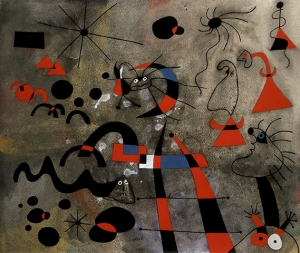
In a small, windowless room away from the crowds at the Barcelona foundation built to maintain the legacy of Joan Miró there is his library. It contains poetry, of course, as well as Plutarch, Hemingway and Lewis Carroll. But on the same shelves there are other books – the pulp fiction thrillers of Edgar Wallace; the schlocky master criminal Fantômas novels; a David Lodge; an unread Ulysses.
It says a lot. For such a wildly imaginative, radical artist there is lots that is reassuringly everyday about Miro. He had a very happy, stable marriage. He was extremely organised. He wasn't known as a big drinker or party animal. In photographs he has no Picasso or Dali-like swagger. He looks like a slightly apprehensive accountant, worried that he's mislaid some receipts.
But it is his art that makes Miró the titan that he is. Next month Tate Modern in London will stage the first major UK exhibition devoted to his work for nearly 50 years – a remarkable gap which, Tate hopes, will mean an entirely new generation can have their eyes opened to one of the most important of all 20th century artists.
The show, which will travel to Barcelona and Washington, also aims to confound expectations and explode a few myths. "Miró's work is often understood in ways that are a little simplistic," conceded the show's co-curator, Marko Daniel. "People look at his work as if it were childlike, or childish, and they tend not to see the depth of passion that goes into it."
Today Miró, a genuine pioneer and forefather of abstract expressionist art, is revered in Spain. Not as a hero necessarily but as a great man whose presence in his home city of Barcelona is everywhere.
It was not always the case. During most of the Franco years Miró was better known abroad. "He went from being almost entirely invisible in the Spanish art world to being feted as the greatest living painter in Spain," said Daniel.
|
|
|
|
|